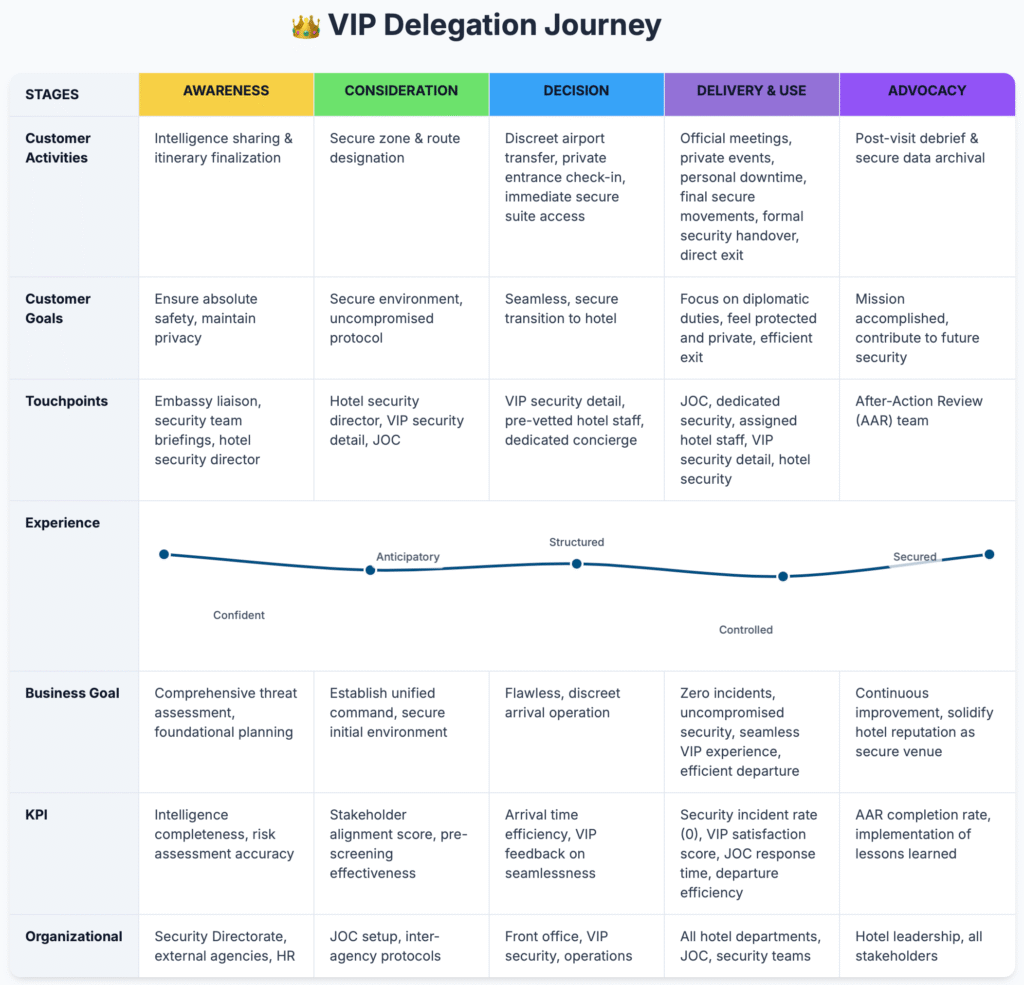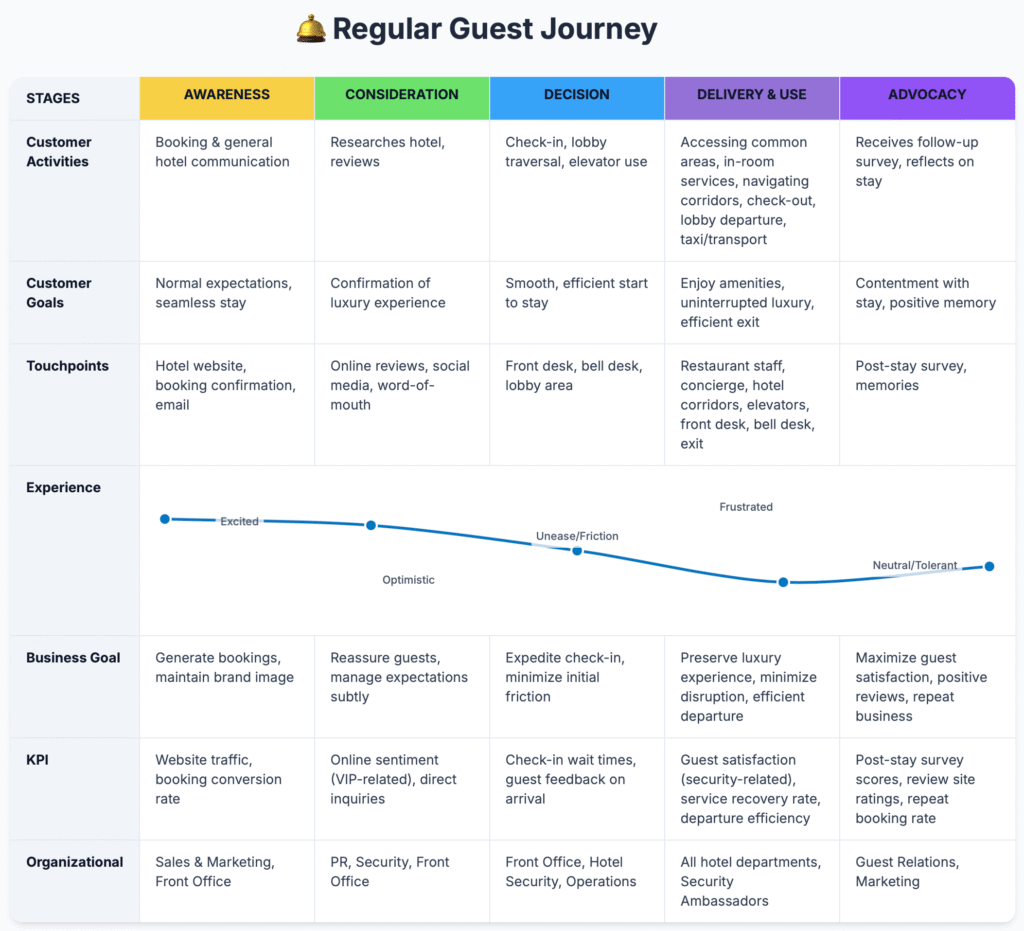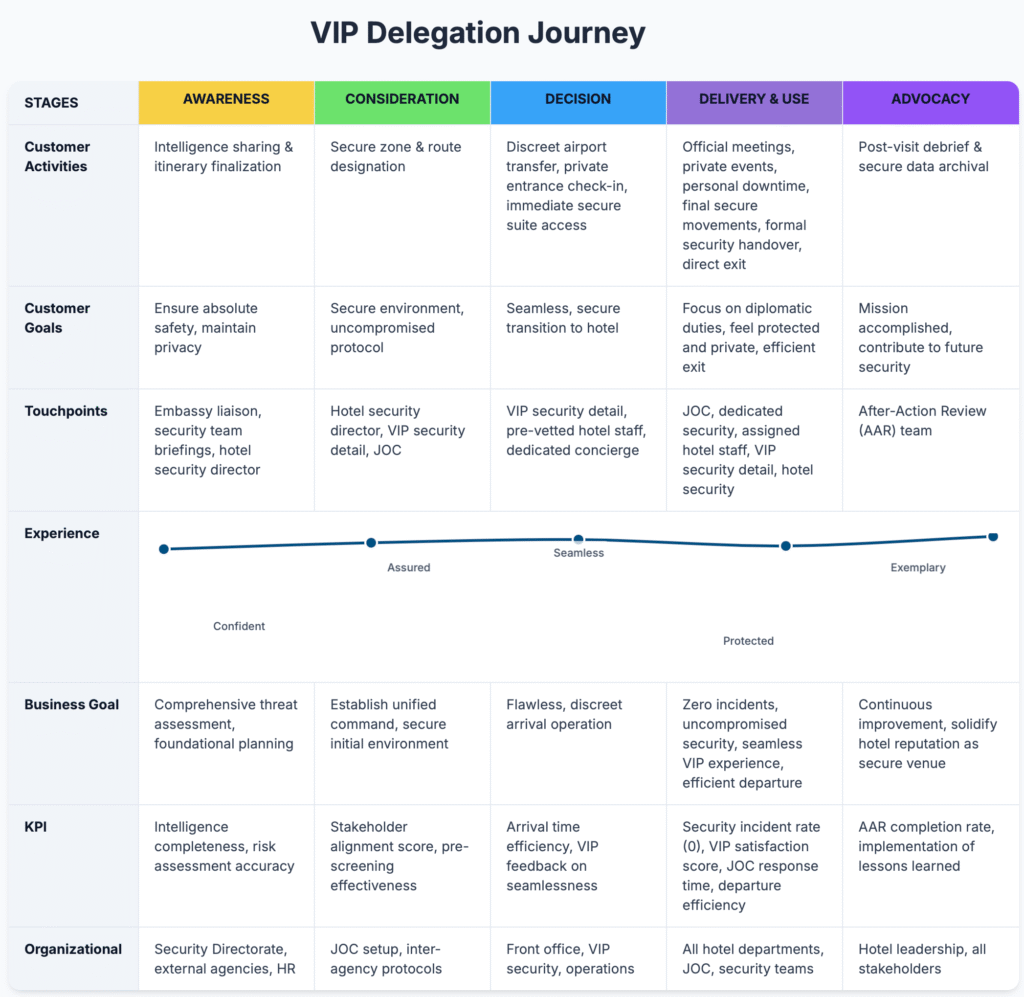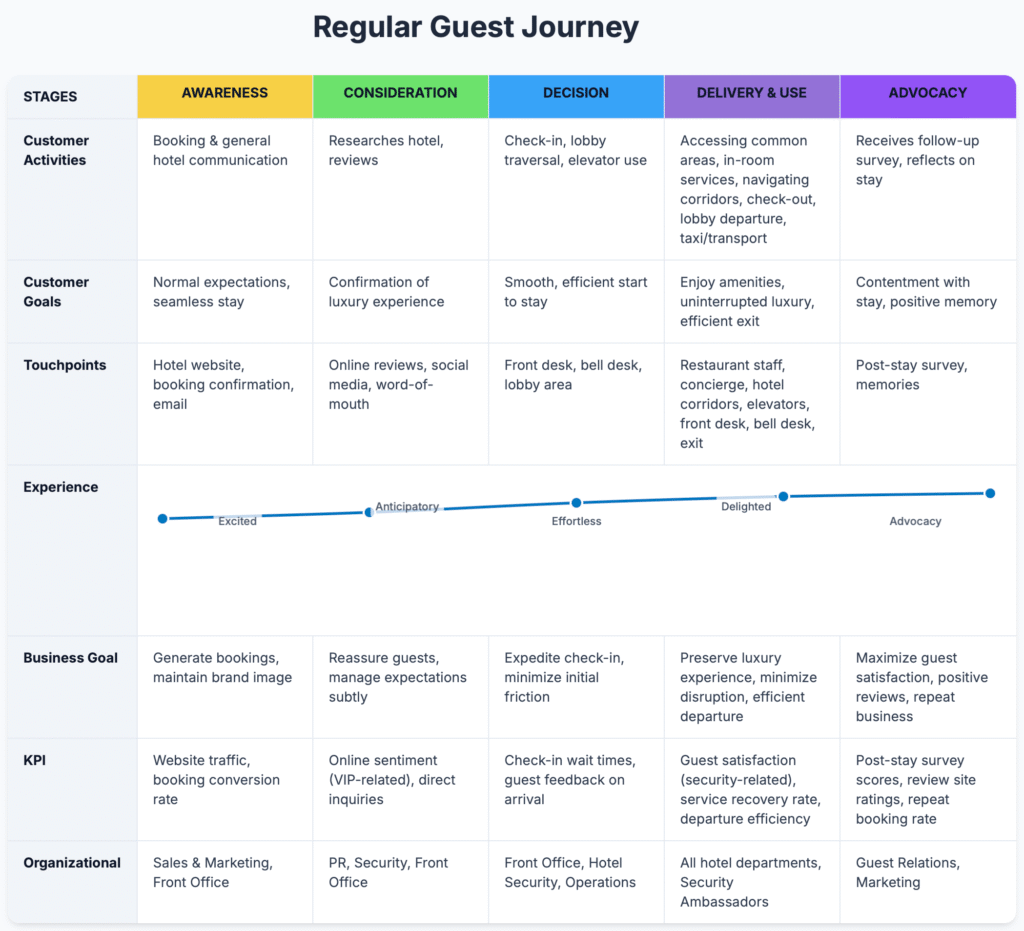1. The Collaborative Command: Unifying a Complex Ecosystem

Success hinged on a unified front. I initiated intensive, co-creative workshops, bringing together:
External Powerhouses: Met Police (Counter Terrorism, Royalty & Specialist Protection), Diplomatic Protection, Embassy Staff, and the VIP’s own Security Detail.
Internal Pillars: Every hotel department manager and key staff – Front Office, Housekeeping, F&B, IT, Engineering, and Access Control.
My role was that of facilitator and orchestrator, ensuring a shared understanding and a unified vision of ‘invisible security’. I conducted in-depth stakeholder interviews to uncover unique perspectives and operational constraints, directly informing our collaborative strategies.
Best Practice: Establish a transparent chain of command and communication matrix as early as possible. Use structured workshops for shared understanding and accountability









